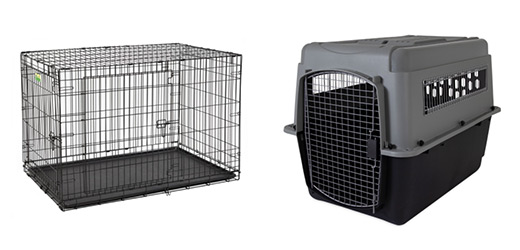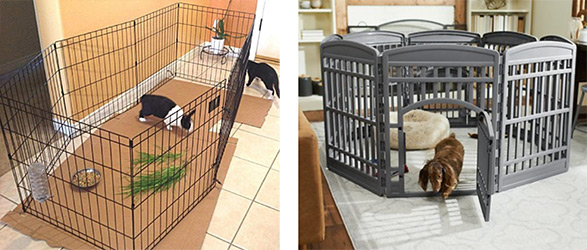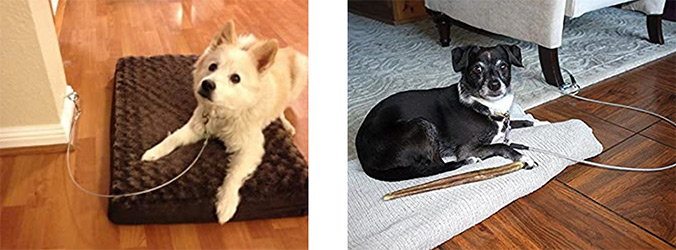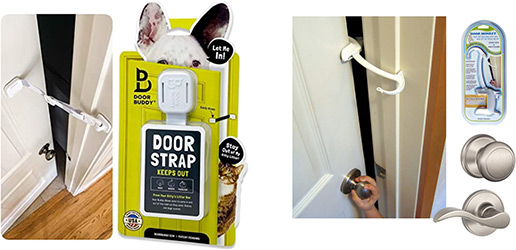Management to prevent or modify unwanted behaviors often requires at least one form of confinement or restraint. Limiting access to certain spaces or situations sets up the pet for success and helps to create a habit of appropriate behavior. While many cases are straightforward, others require a bit of creativity. Following are some of the options for indoor containment/restraint.
Crates

One of the most common containment items is the dog crate. Available in a variety of sizes, materials, and styles, crates are mostly used to prevent or resolve house soiling and destructive behavior but are also useful when introducing new pets to the home, training exuberant dogs to relax, and in myriad other cases.
Gates

Gates are another common confinement tool. Gates allow more space for the pet than a crate does. As with crates, they are available in a variety of sizes, materials, and styles. Many standard-sized gates are easily scaled by cats. Extra-tall gates are now available. Two or three average gates can be stacked in a doorway to assure containment, as well.

If those stacked standard tension gates are too much of an inconvenience for you, two walk-through gates can be used. Install the top gate upside-down so that you can open the two gates and easily pass through.
X-pens

X-pens are like a crate and gate mash-up. Multiple attached panels can be folded for storage or transport and provide for reconfiguration of the confinement area. X-pens are mostly used for housetraining, preventing destructive behavior, and providing a safe exercise space for small animals. They can also be used to create an "air lock" when a second layer of security is required – to prevent a dog from running out of the home or a cat from charging into a new cat’s room during introductions, for example.

Cat Cage

Similar to dog crates, cat cages are taller and usually equipped with shelves or hammocks to allow the cat to engage in natural climbing and perching behaviors. Useful for preventing destructive behavior, working with scared/shy kittens and cats, and litter box training.
Tie downs

Tie downs, or tethers, limit a dog’s space without the use of a crate. They are especially useful for training excitable dogs to relax, as it is easier to observe the dog’s behavior and to dispense treats or other rewards to the dog than when he is confined to a crate. The photos demonstrate commercially available cable tie downs but the dog’s leash can be used instead, especially for affixing the dog to furniture. Tie downs can also be used to prevent destructive behavior or eliminating indoors, as well as treating other behavior issues. Tie downs should only be used when the dog is directly under adult supervision; they are not appropriate for a crate replacement when the dog is alone.
Partial access solutions
Often a family wants to allow one pet to have access to an area that is off-limits to other pets or children. For instance, the dog may need to be kept from the bathroom because he is snacking from the cat’s litter box or the dog needs to have a quiet room where she can take a break from the kids. Two door stoppers – one on each side - can be used to keep a door open just enough for the pet who is permitted to get in and out of the room, but that might not be adequate to keep out a large dog or problem-solving child. Products such as Door Buddy and Door Monkey might be better options for these cases.

Selective pet doors are suitable for pets of most sizes and especially beneficial if it is the smaller animal that needs to be kept out. Selective pet doors use either the pet’s implanted microchip or a special collar to unlock the door for only that animal. The door can be installed into a room door or a wall.

This list is by no means exhaustive, but it does cover the most common management situations and the equipment that is most likely to help.
